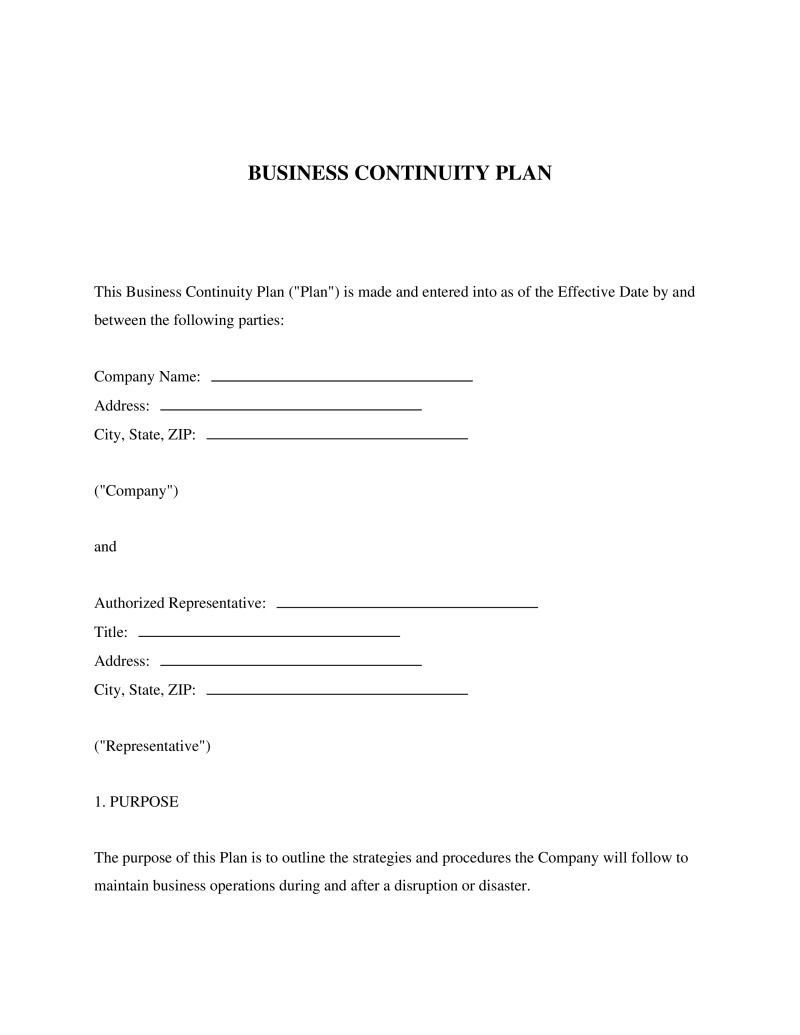Business Continuity Plan
Organization Name
Type the full legal name of your organization, such as "XYZ Nonprofit Foundation" or "ABC Corp." Make sure to include any suffixes like "Inc." or "LLC" if applicable. This name will be used for legal identification, so it should match the name registered with state authorities.
Not the form you're looking for?
Try our AI document generator to create a custom document
Powered by AI • Create custom legal documents instantly
What is a Business Continuity Plan?
A Business Continuity Plan (BCP) is a strategic document that outlines how a business will continue to operate during an unplanned disruption in service. It's more comprehensive than a disaster recovery plan and contains contingencies for business processes, assets, human resources, and business partners – every aspect of the business that might be affected. It's a vital component of successful business continuity planning.
Key Features
Pros & Cons
A well-crafted BCP demonstrates to regulators, auditors, and stakeholders that the business is prepared for disruptions. In certain industries, having a business continuity plan may be a legal or contractual requirement. In the event of a lawsuit, your BCP can be evidence that your organization took reasonable steps to mitigate the risk of business disruptions.
Pros
Cons
Common Uses
Do you have a question about a Business Continuity Plan?
Example questions:

About this document
A Business Continuity Plan outlines strategies to maintain operations during disruptions, ensuring organizational resilience and recovery.
This document is designed to comply with the laws of all 50 states.
Community Discussion
Share your experience and help others
Legal Notice: Comments are personal opinions and do not constitute legal advice. Always consult a qualified attorney for matters specific to your situation.
Comments (0)
Leave a Comment
No comments yet. Be the first to comment!